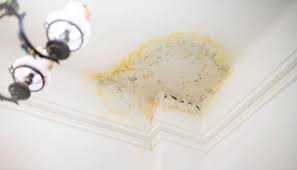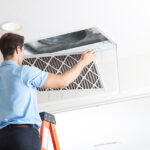Water damage can be one of the most destructive and costly problems a homeowner faces. Unlike visible leaks or floods, hidden water damage often goes unnoticed for months, quietly affecting structural integrity, air quality, and safety. It can begin behind walls, beneath floors, or in attics where moisture accumulates unnoticed until stains, odors, or mold appear. Identifying the signs early helps prevent expensive repairs and health hazards caused by prolonged dampness. Understanding how to detect hidden water damage is crucial, as it ensures that minor issues are addressed promptly before they escalate into significant structural problems.
Recognizing the Early Warning Signs
The first step to identifying hidden water damage is knowing the subtle signs that something isn’t right. Discoloration on walls or ceilings often indicates moisture trapped behind the surface. Even minor stains or bubbling paint can be a warning of leaks from pipes or roof lines. Soft or warped flooring is another giveaway, as trapped moisture weakens the materials beneath. Musty odors are equally revealing, suggesting the presence of mold or mildew growth that thrives in damp environments. Condensation on windows or around vents may indicate excess humidity resulting from water intrusion. Listening carefully can also help—dripping or gurgling sounds inside walls may indicate a hidden leak. These small, seemingly harmless indicators should never be ignored because they can signal deeper damage that threatens both the structure and air quality of your home over time.
Inspecting Common Problem Areas
Certain parts of a home are more susceptible to hidden water damage than others. Basements, attics, bathrooms, and kitchens are the most common areas affected due to frequent exposure to moisture and fluctuating temperatures. In basements, look for cracks in the foundation or pooling water along the floor edges, which may suggest seepage. Attics can develop damage when roof leaks or poor ventilation allow condensation to form. In bathrooms, check around tubs, sinks, and toilets for loose tiles or damp walls. Kitchens can also conceal leaks beneath sinks or behind appliances, such as dishwashers and refrigerators. Homeowners in humid regions, such as Austin, should be especially vigilant since high moisture levels increase the risk of hidden mold and water damage. Regular inspections in these areas can prevent long-term deterioration, keeping the home’s structure solid and maintaining a healthy indoor environment. Detecting these issues early allows for more affordable and less invasive repairs before severe damage occurs.
Understanding the Hidden Dangers of Moisture
Water damage doesn’t only affect walls and floors—it can compromise the health and safety of your household. When moisture lingers undetected, it creates the perfect breeding ground for mold spores that spread quickly through the air. Mold exposure can cause respiratory irritation, allergic reactions, and other health issues, particularly in children or individuals with asthma. Beyond health risks, water damage weakens wooden structures, corrodes pipes, and damages insulation. Over time, this deterioration can lead to costly renovations or even structural instability. Electrical systems are also at risk; moisture can seep into wiring and outlets, increasing the chance of short circuits or electrical fires. These dangers highlight why hidden water damage should never be underestimated. Even a minor leak can cause widespread problems if left unattended for too long. Addressing the root cause immediately helps preserve both the safety and value of your home while preventing unnecessary health concerns.
How Technology Aids in Detection
Modern technology makes identifying hidden water damage easier and more accurate. Infrared cameras can detect temperature variations in walls or ceilings, revealing moisture pockets invisible to the naked eye. Moisture meters measure water content in building materials, providing precise data about affected areas. Professionals also use thermal imaging to trace leaks to their source without tearing down walls or flooring. These tools help pinpoint problems before they become serious, saving time and reducing the need for unnecessary repairs. Homeowners can benefit from periodic professional inspections that include these technologies, especially in older homes or those located in flood-prone regions. Even small leaks hidden behind cabinetry or under flooring can be detected early through these methods. By combining modern tools with vigilant observation, homeowners can maintain their property’s integrity and prevent extensive damage that might otherwise go unnoticed for months or even years.
Preventive Maintenance and Routine Checks
The most effective way to protect your home from hidden water damage is through consistent maintenance and observation. Regularly checking plumbing connections, cleaning gutters, and inspecting the roof helps prevent moisture buildup. Replacing worn-out caulking around tubs, sinks, and windows can also block potential water entry points. Maintaining proper ventilation, particularly in bathrooms and kitchens, helps reduce humidity and minimize condensation. Regular HVAC maintenance prevents leaks from air conditioning units that often go unnoticed until damage has already occurred. Another smart habit is monitoring water bills; unexpected spikes can indicate hidden leaks in pipes or fixtures. Small preventive actions taken throughout the year go a long way in avoiding costly damage later. Keeping records of maintenance and inspections ensures you stay proactive, addressing potential issues before they grow into emergencies. A little diligence now can save thousands in repairs and restore long-term peace of mind.
When to Seek Professional Help
While homeowners can identify some signs of water damage, certain situations require professional assessment. If you notice persistent mold growth, peeling wallpaper, or damp odors that persist despite attempts to resolve them, it’s essential to contact a qualified restoration technician or contractor. These professionals have the knowledge and equipment to locate and repair hidden leaks safely. They can also test for mold and determine the extent of damage behind walls or under flooring. Timely intervention prevents damage from spreading and restores affected areas efficiently. Suppose structural components or electrical systems are compromised. In that case, professional repair is not just recommended—it’s essential for safety. Ignoring severe water damage can lead to long-term complications, including increased repair costs and a decrease in property value. Seeking professional assistance ensures that every affected area is treated thoroughly and that your home returns to a safe, dry, and stable condition.
Read More: https://acubi.us/how-regular-hvac-filter-changes-improve-indoor-air-quality/
Protecting Your Home from the Unseen
Hidden water damage can be silent but devastating, affecting both the structure and safety of your home. Recognizing early warning signs, inspecting vulnerable areas, and investing in preventive maintenance are key to minimizing its impact. Technology and professional inspections further enhance detection, providing accuracy and peace of mind. Acting quickly when signs appear prevents minor problems from escalating into costly repairs or health risks. A well-maintained home not only retains its value but also provides a safe and comfortable living environment for years to come. By staying vigilant and proactive, homeowners can protect their investment and prevent hidden water damage from taking hold.



